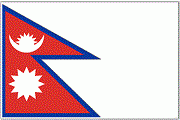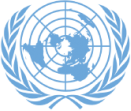Mr. President,
I am honoured to speak in this event organized today to mark the successful conclusion of the 2019 International Year of Indigenous Languages.
I would like to join the other speakers in commending the co-chairs of the Steering Committee for their contribution towards making the International Year a success.
I also commend UNESCO in holding successful events along with Member States, the Permanent Forum on Indigenous Issues, and all other stakeholders for their actions and efforts in raising awareness about indigenous languages.
Needless to say, the commemoration of 2019 as the International Year has been successful in raising awareness about the critical situation of many indigenous languages worldwide, celebrating our world’s diversity, philosophical beliefs, wisdom, traditional knowledge, and understanding each community’s unique relationship with their environment, habitat and knowledge associated with it.
Mr. President,
Nepal as a multi-lingual, multi-cultural and diverse society, is committed to preserving our diversity and giving utmost importance to preservation, promotion and revitalization of the indigenous languages.
The Constitution of Nepal guarantees the rights and freedoms of Indigenous Peoples. It acknowledges all languages spoken as the mother tongues in Nepal as the languages of the nation and grants every Nepali community the right to education in its own mother tongue.
The constitution has a provision of ‘Language Commission’ with the responsibility to recommend to the government for the protection, promotion, and development of languages.
The Government has a policy to develop curricula for teaching in indigenous languages in the early grades of schools. Communities can also open and operate schools in indigenous languages. So far, textbooks in twenty-four different languages have been prepared.
These initiatives aim at protecting and promoting indigenous languages and encourage easy access to school for children of indigenous communities.
Besides use of indigenous languages as medium of instructions in primary and secondary schools to enhance learning skills of multi-lingual children, the local Government’s official recognition of indigenous languages’ has also proved to be effective.
The Government has also formulated the National Education Policy, 2019 with strategies and programmes to effectively implement the Government’s language policy at all levels.
The Policy also identifies ‘education’ in local languages as a basis for the country’s longer-term development vision.
As a reflection of diversity, media such as radio, television and newspapers, and indigenous art and literature are also playing their part and contributing to expanding the scope of languages beyond family circles and bringing its relevance to the outer world.
In conclusion, Mr. President, promoting, preserving and revitalizing indigenous languages is not only about inter-generational transformation of knowledge and ideas but it is also about connecting ourselves with our roots, celebrating the linguistic diversity and respecting the differences. Nepal remains committed to incorporating this spirit into equitable, participatory and people-centered sustainable development process, and working closely with the international community in this regard.
I thank you.


